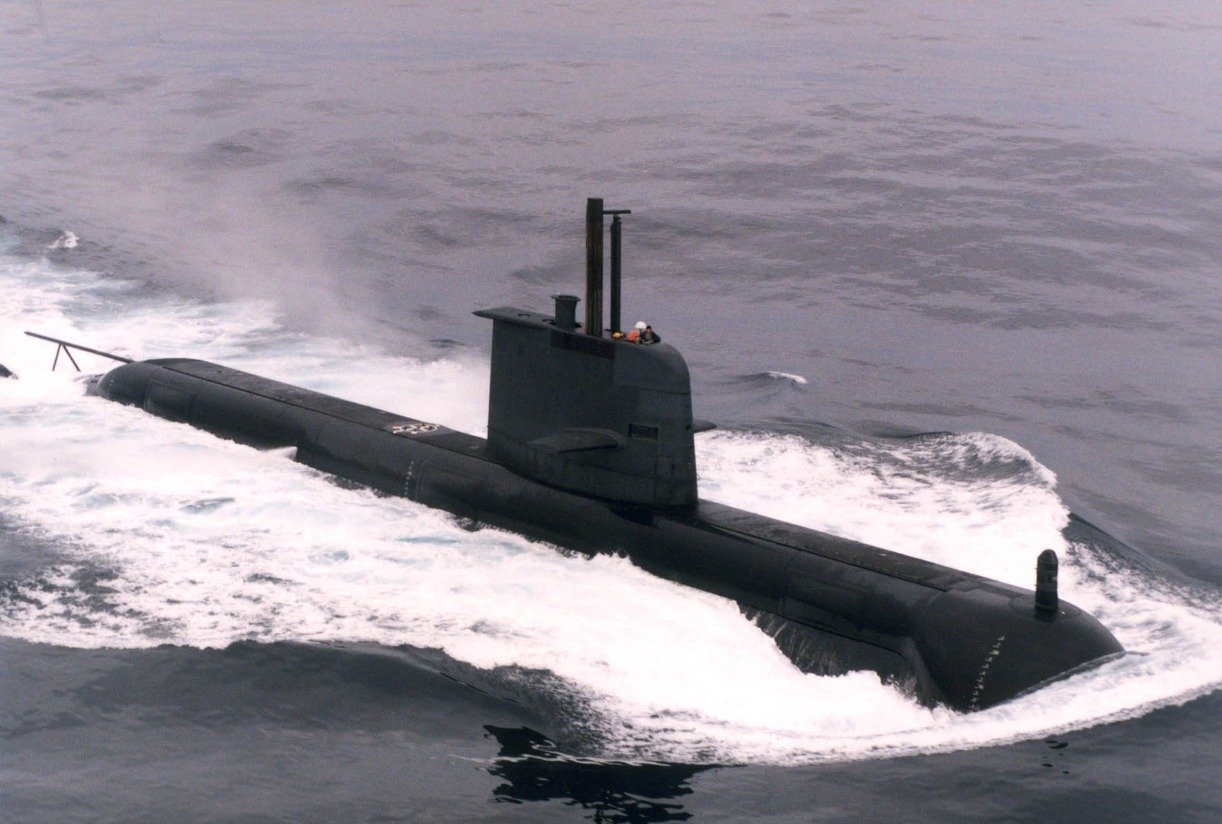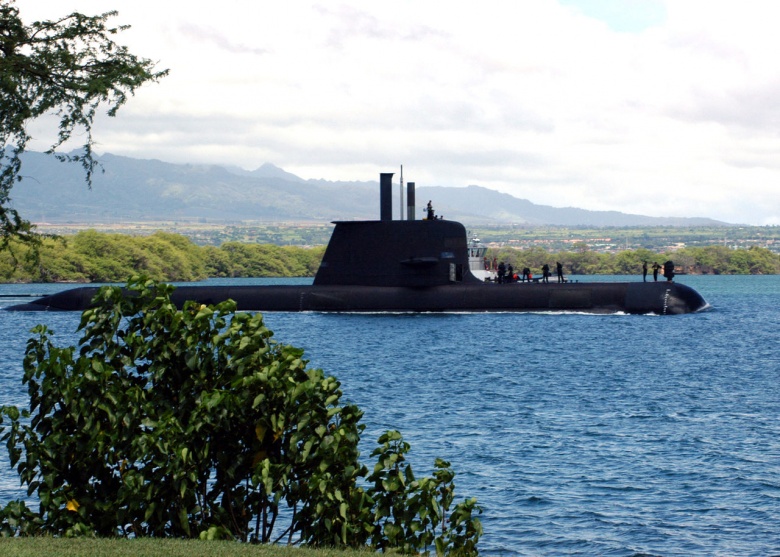Collins-Class Submarine Almost Suffered a 'Catastrophic Loss'
Australia, a key U.S. military ally, has faced challenges in modernizing its navy, particularly its submarine fleet. In 2003, the HMAS Dechaineux, a Collins-class submarine, nearly sank after a seawater pipe burst near its maximum diving depth, highlighting significant design and operational flaws.
What You Need to Know: Australia, a key U.S. military ally, has faced challenges in modernizing its navy, particularly its submarine fleet. In 2003, the HMAS Dechaineux, a Collins-class submarine, nearly sank after a seawater pipe burst near its maximum diving depth, highlighting significant design and operational flaws.

-The incident underscored the need for better investment in submarine capabilities. The Collins-class faced multiple issues, including high operational costs and technical challenges.
-Today, Australia is part of the AUKUS agreement with the U.S. and the U.K. to develop nuclear-powered submarines, aiming to strengthen its naval power in the Indo-Pacific and deter potential adversaries like China. The Dechaineux incident serves as a reminder of the critical importance of adequate investment in national defense assets.
HMAS Dechaineux: The Submarine Near-Disaster That Shaped Australia's Naval Future
Australia is one of the most important military partners for the United States. It is a continent-sized nation-state with a shared Anglosphere culture and tradition. What’s more, its geography gives it the potential to become a potent regional navy.
Yet, there was a period of time when the Australian Navy struggled in the aftermath of the collapse of the Soviet Union and the end of the Cold War. Every Western nation did this. But Australia especially let itself go when it came to naval matters.
Things got especially complicated in the post-Cold War era because, like so many Western nations, Australia’s leaders—both of the Left and the Right—allowed themselves to become completely reliant on China for trade. It took the shocking events of the COVID-19 pandemic to shake Canberra from its complacency on China.
Today, Australia is experiencing a resurgence not only in its sense of nationalism but also in its desire to modernize its military, especially its navy, to better deter foreign adversaries (such as China).
But there have been immense growing pains over the years.

One of the most painful experiences for the Australian Navy comes from 2003. At that time the HMASDechaineux, one of Australia’s Collins-class submarines, suffered a major flooding incident.
The Dechaineux
Named after Captain Emile Dechaineux, the HMAS Dechaineux was among the largest conventionally-powered submarines globally. It was launched as part of Canberra’s attempt to modernize Australia’s submarine force.
Sadly, the Collins-class submarines were plagued by multiple operational and technical challenges from their beginning. To overcome these problems, Australia’s Ministry of Defense instituted a “get well” program for the ailing Collins-class submarines.
At the time, Australia was retiring their aging Oberon-class submarines. So, they needed to get the Collins-class subs right. Hence, the “fast track” program meant to make the Collins-class subs more reliable.
The program, obviously, did not work as planned.
The Incident
On February 12, 2003, the HMAS Dechaineux was operating near its maximum safe diving depth off Western Australia when an onboard seawater pipe burst. High-pressure seawater flooded into the lower engine room. This was a significant crisis for the submarine as it was underway.
Had the flooding not been staunched for another twenty seconds, the submarine might have sunk below its maximum operational depth, and would have been lost with all hands.
It would have been bad enough if the Dechanieux disaster was an isolated event. It was not. The Collins-class submarines had numerous construction issues, high operational costs, and design flaws. The Dechanieuxincident only added to the narrative that the Collins-class submarines were not worth the money Australia was investing in them.
The Context
Today, the Australians have entered into a nuclear submarine construction alliance with the United States and the United Kingdom (AUKUS). Canberra hopes that this will put their submarine force in the lead for the Indo-Pacific. Washington and London both believe that Australia will become a nuclear-powered submarine potentate that will deter China’s rise in the region.
But the Dechanieux fiasco serves as an important reminder for what happens when a nation does not adequately invest in its submarine force—and what happens if one were lost, how damaging to that nation’s readiness such an event would be.
Author Experience and Expertise: Brandon J. Weichert
Brandon J. Weichert, a National Interest national security analyst, is a former Congressional staffer and geopolitical analyst who is a contributor at The Washington Times, the Asia Times, and The-Pipeline. He is the author of Winning Space: How America Remains a Superpower, Biohacked: China’s Race to Control Life, and The Shadow War: Iran’s Quest for Supremacy. His next book, A Disaster of Our Own Making: How the West Lost Ukraine, is due October 22 from Encounter Books. Weichert can be followed via Twitter @WeTheBrandon.
All images are Creative Commons or Shutterstock.
From the Vault


